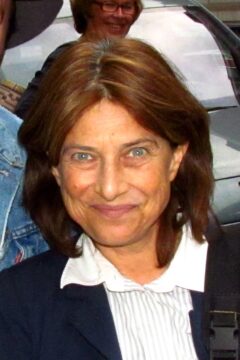Beatrice Loayza at The Current:
 In the 1996 television documentary Chantal Akerman par Chantal Akerman, the Belgian filmmaker describes the life of her maternal grandmother, Sidonie Ehrenberg, an aspiring artist. As a wife and mother living in Poland, Ehrenberg painted despite the gendered restrictions imposed upon her by her Orthodox Jewish milieu. After the Nazis invaded the country, Ehrenberg was sent to Auschwitz, where she was killed in 1942 along with her husband. Her daughter Natalia survived; she was still a teenager when the camps were liberated. Ehrenberg’s artworks were never found after the war, yet Natalia, Akerman’s mother, preserved something of them in her memories of childhood. Ehrenberg used enormous canvases, and her subjects were straightforward: women’s faces gazing outward, “and that’s all,” Akerman explained in the documentary.
In the 1996 television documentary Chantal Akerman par Chantal Akerman, the Belgian filmmaker describes the life of her maternal grandmother, Sidonie Ehrenberg, an aspiring artist. As a wife and mother living in Poland, Ehrenberg painted despite the gendered restrictions imposed upon her by her Orthodox Jewish milieu. After the Nazis invaded the country, Ehrenberg was sent to Auschwitz, where she was killed in 1942 along with her husband. Her daughter Natalia survived; she was still a teenager when the camps were liberated. Ehrenberg’s artworks were never found after the war, yet Natalia, Akerman’s mother, preserved something of them in her memories of childhood. Ehrenberg used enormous canvases, and her subjects were straightforward: women’s faces gazing outward, “and that’s all,” Akerman explained in the documentary.
The genius and audacity of Akerman’s work lies in its recognition that such seemingly unremarkable images contain bounties, and that marginalized lives like Ehrenberg’s, decimated by time and silenced by tragedy, possess spectral qualities that, until Akerman began making films, had yet to be evoked in any art form.
more here.
